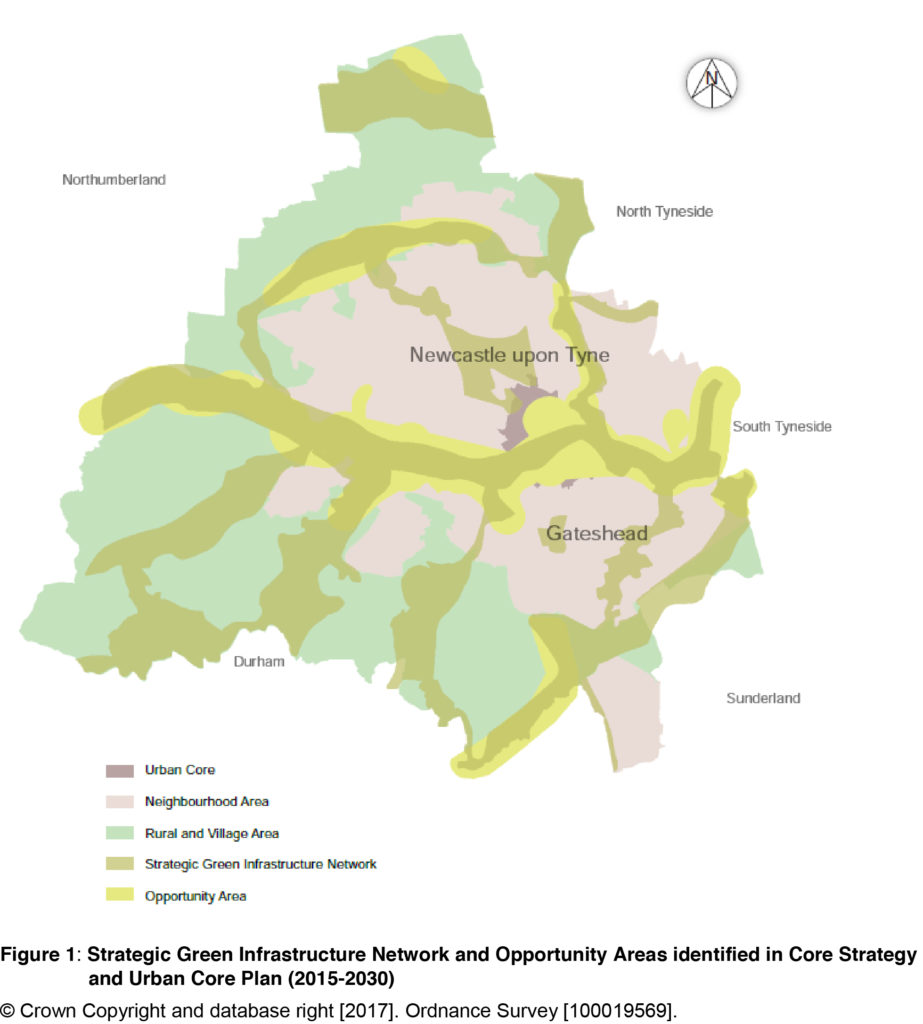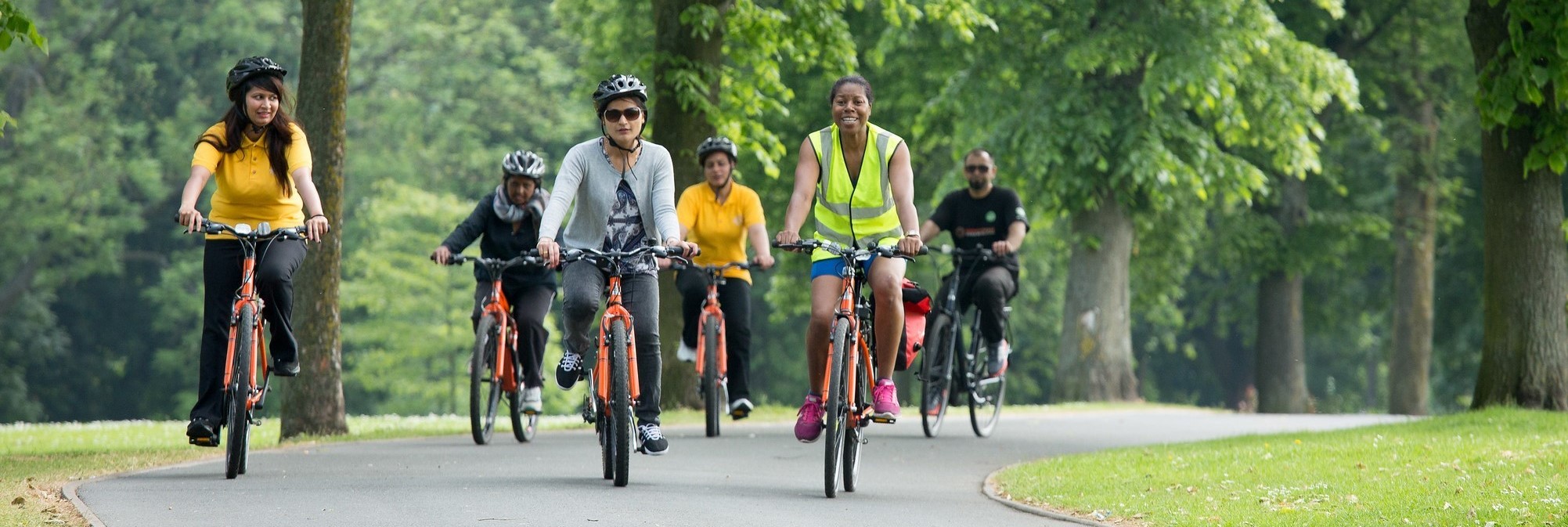Health, travel and air quality
Decarbonising the transport sector by promoting active forms of travel such as walking and cycling, making vehicles more fuel efficient and moving from petrol and diesel to electric or hydrogen-powered vehicles, has the potential to make considerable improvements to air quality across the UK, improve physical and mental health, and reduce the strain on the NHS.
- More than 40 towns and cities in the UK reach or exceed air pollution limits, with poor air quality linked to around 40,000 deaths per year in the UK.
- Estimates suggest that tackling air pollution could save the UK economy £1.6bn per year through reduced numbers of premature deaths, fewer sick days taken and higher work productivity.
- It is estimated that between 2017 and 2035 there will be approximately 2.5million air pollution related cases of disease. It is predicted that the cumulative cost of this to the NHS and social care could reach £18.57bn unless action is taken to significantly reduce air pollution.
- 60% of deaths related to the combustion of fossil fuels are caused by the transport sector.
- People’s levels of physical activity can be increased through facilitating active travel; increased physical activity could potentially save the NHS £17bn within 20 years by reducing the prevalence of type-2 diabetes, dementia, heart disease, cerebrovascular disease, and cancer.
Action to decarbonise travel can also address health inequalities. Air pollution levels in the UK have been shown to have strong associations with deprivation. Those who live in low-income areas are the most affected by air pollution and yet are often those least responsible for producing it.
Example: Active Wellbeing Society
Increasing physical activity in the Midlands and beyond, making cycling more accessible and safe while improving local air quality and congestion levels.

Health and housing
20.8% of the UK’s carbon emissions in 2020 came from the residential sector, predominantly caused by fuel used for domestic cooking and heating. Poor energy efficiency in housing has a direct effect on the physical and mental health of those living in the worst quality housing. Improving the energy efficiency of the UK housing stock provides an opportunity to reduce costs to the NHS, tackle inequality and improve the productivity of the workforce.
- The cost to the NHS of ill health from cold homes is estimated at £857m/year.
- Children living in inadequately heated households are more than twice as likely to suffer from respiratory conditions such as asthma and bronchitis than those living in warm homes. These conditions are exacerbated or brought on by exposure to moulds and dampness that are more likely to be present in cold homes.
- In the 2019/2020 winter period, there were an estimated 28,300 excess winter deaths, a large share of which were attributable to living in a cold home.
- Individuals living in homes with a bedroom temperature below 15oC are 50% more likely to suffer from mental health problems compared to those whose bedrooms are heated to 21oC.
- Housing charity Shelter reports that 1 in 5 private renters in England (1.9 million people) suffer physical and mental problems due to poor housing.
Find more information on equality and social cohesion in Chapter 6 of this toolkit - Cold homes have a significant impact on the mental health of parents of young children in particular.
- The detrimental health effects of inefficient housing also result in economic losses through missed work associated with cold-related illnesses and impacts on morale, productivity and educational attainment. Minor illnesses such as coughs and flu led to 30.95 million working days lost in 2020.
More Information
Economic opportunity, green jobs and skills in Chapter 4 of this toolkit.
Case Study: Hastings – Improving energy efficiency in homes
Hastings Borough Council tackles fuel poverty with warm homes support for owners and renters.

Example: Cosy Homes Lancashire
2016 Ashden Award winner bringing together 14 local authorities in the county to improve the energy efficiency of privately owned and privately rented homes.

Example: SHINE (Seasonal Health Intervention Network)
Works with over 80 partners, from GP surgeries to housing and community organisations, to refer vulnerable people for energy efficiency interventions and advice.

Health and green space
Parks and public gardens, as well as ‘blue spaces’ such as rivers and lakes, are associated with health and wellbeing at the community level, including: satisfaction with ‘place’, increased social cohesion and interaction, an increase in volunteering, and opportunities for more creative ‘play’ among children, as well as better educational performance.
- If everyone in England had access to sufficient green space, the benefits associated with increased physical activity could save the health system £2.1bn per year.
- Proximity to green space also has mental health benefits. Those living closer to green space in urban areas have been found to experience lower rates of anxiety or mood disorder treatment, while studies have shown a link between access to green space and reduced levels of stress.
Green spaces also help to regulate temperature and water flow, reduce noise and air pollution, and can also reduce the energy consumption of buildings. The integration of green space into urban areas can play an important role in helping to reduce extremes of temperature and associated admissions to the NHS, while simultaneously reducing carbon emissions.
Example: Newcastle Green Infrastructure Framework
Identifying co-benefits of green infrastructure including mental and physical health improvements.

Health and climate
Extreme weather events, such as heatwaves and flooding, are predicted to become more common as a result of climate change and have significant health impacts. In the UK, research shows that people who have experienced flooding are almost 9 times more likely to experience long-term mental health conditions – depression, anxiety, PTSD – than the general population. A quarter of people who have been flooded continue to experience these negative mental health impacts two years after the event and beyond.
Heatwaves are associated with increased excess mortality. Public Health England found that in England in 2006 there were an estimated 75 extra deaths per week for each degree of increase in temperature above 25°C. By 2050, heat-related deaths could treble to 7,000 per year if average summer temperatures continue to rise.
More Information
Find more information on resilience and adaptation in Chapter 5 of this toolkit.
Health and food
The WHO estimates that greenhouse gas emissions could be reduced if the average dietary intake in the UK complied with its own dietary recommendations (i.e. reducing consumption of red meat, dairy products, eggs and sweet and savoury snacks). Complying with the WHO’s dietary recommendations could also have health benefits:
- Diets with relatively high amounts of beef, lamb and pork are associated with higher risks of cardiovascular disease, stroke and certain types of cancer.
- It would lead to an increased average life expectancy at birth by over 8 months and save almost seven million years of life lost prematurely in the next 30 years.
It could also help to reduce the incidence of obesity and type-2 diabetes, thereby reducing the strain on the NHS and saving public money.
Example: North Lancashire Food Partnership
An award-winning sustainable food network, bringing together local food businesses, the local farmers and community food groups to make healthy, sustainable and ethical food available to everyone.

Example: Nottingham Good Food Partnership
A coalition of over 50 member organisations working together to transform the sustainability of Nottingham’s local food system, improving health and cutting the carbon footprint of food.

Previous Section:
3.1 Key facts and sources of information
Next Section:
3.3 Links to statutory duties

